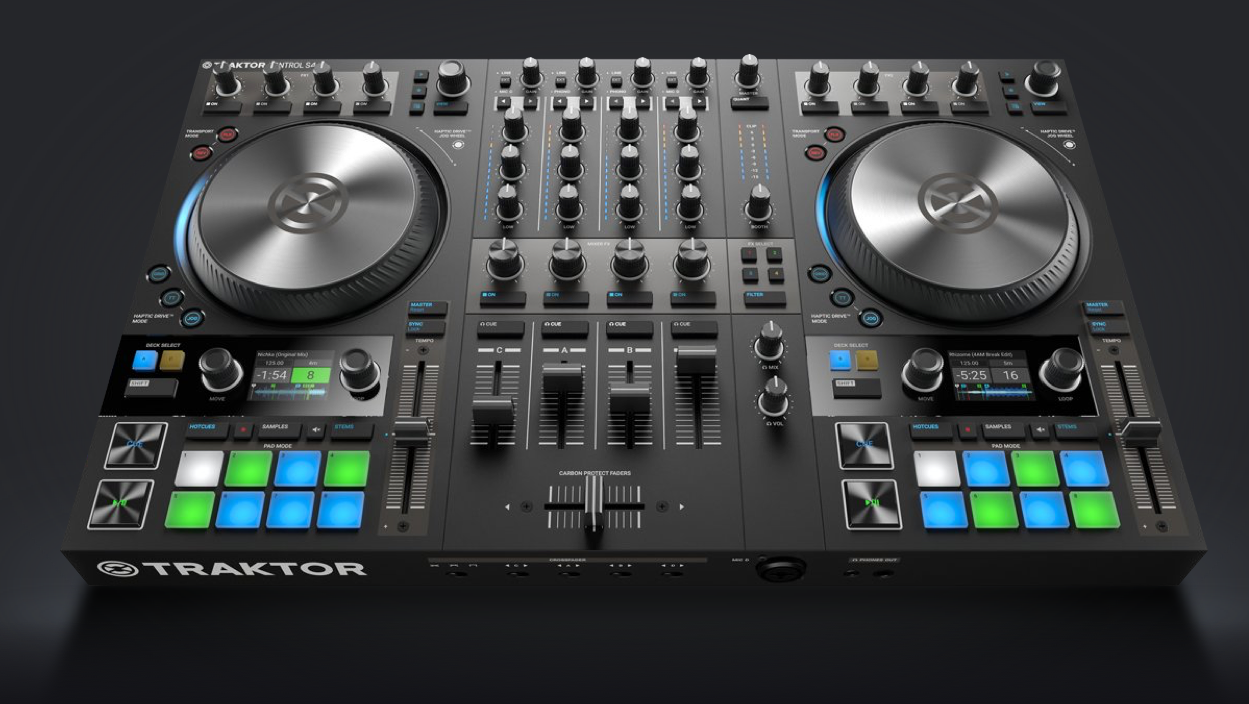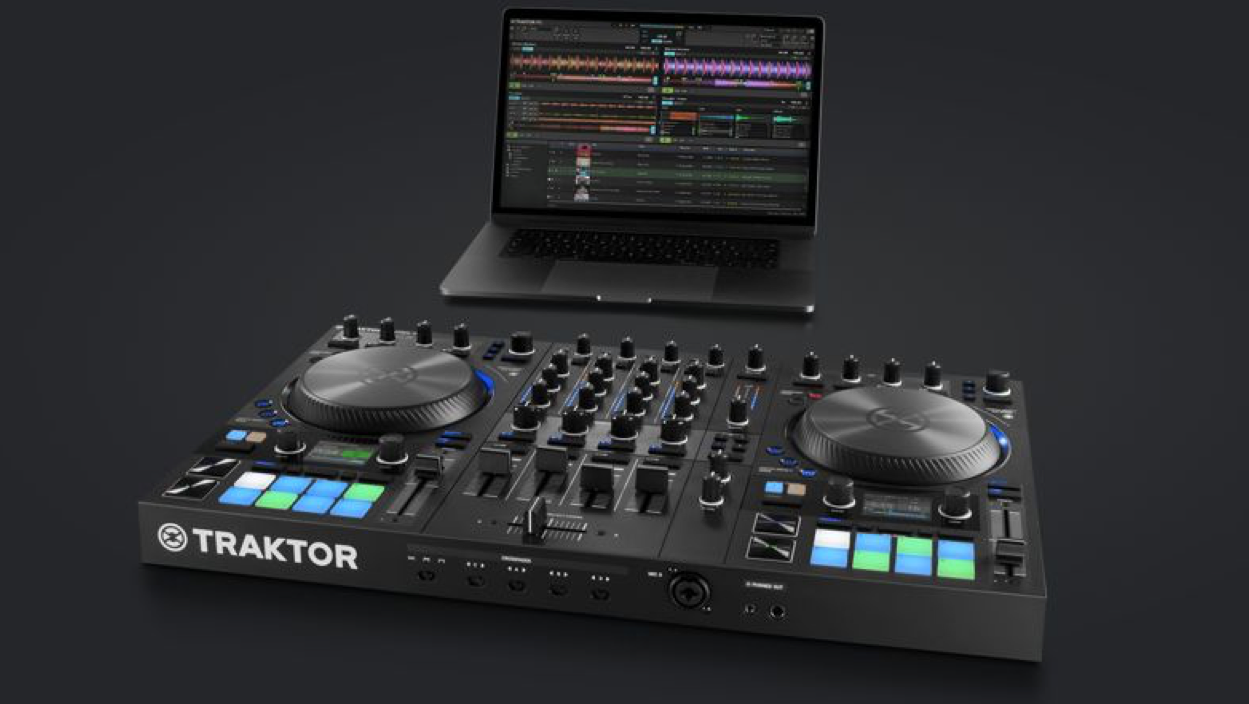My role
UX Design
Traktor Kontrol S4 is a Dj hardware controller that lets you connect with your tracks using motorized haptic jog wheels that spin and react to nudging, scratching, pitch-fading, and backspins.
more about the development of this project below
I led the efforts on the UX side from the very beginning.
Stage 1 – The kickoff
Small exploration team, 1 designer (myself) and 1 product owner.
Stage 2 – The pivot
The Incubator. The team grow to 4 people.
Stage 3 – The actual development
A fully functional development team was set up. The setup included 1 Product Owner, 1 UX designer (myself), 1 industrial designer, 1 CAD engineer, 1 mechanical engineer and 1 electrical engineer.
I prioritized the research tasks together with the product owner balancing the customer expectations with the business needs. I reached to other teams and synced with other departments for coordinating our work in order to avoid double efforts.
I created new concepts based on user input, both on my own and also in brainstorming sessions with my team. For better communicating the new ideas I created prototypes (cardboard to 3D renders to interactive).
I have organized user research sessions in various locations gathering user feedback both in person or remotely. I partnered together with other product owners and other UX and UI designers for executing the research rounds and I led synthesizing sessions.
I validated the newly created concepts both internally with the team, and externally with the users. Shared the findings within the company by presenting to various internal stakeholders and documented the results.

Our challenge was to create the next STEMS controller. The goal was to push the innovation even further by offering unprecedented sound control to every DJ around the world.
Music stems are a type of audio file that breaks down a complete track into individual mixes.
Traktor was betting on STEMS. The previous DJ controller, Kontrol S8, was designed for STEMS so our challenge was to create the next STEMS controller. The goal was to push the innovation even further by offering unprecedented sound control to every DJ around the world.
I started gathering user feedback and expectations from forums and blogs. This allowed me to make a point towards user testing jog wheels. Internally there was the belief that we should build a controller without jog wheels but externally the users were complaining about this decision everywhere.
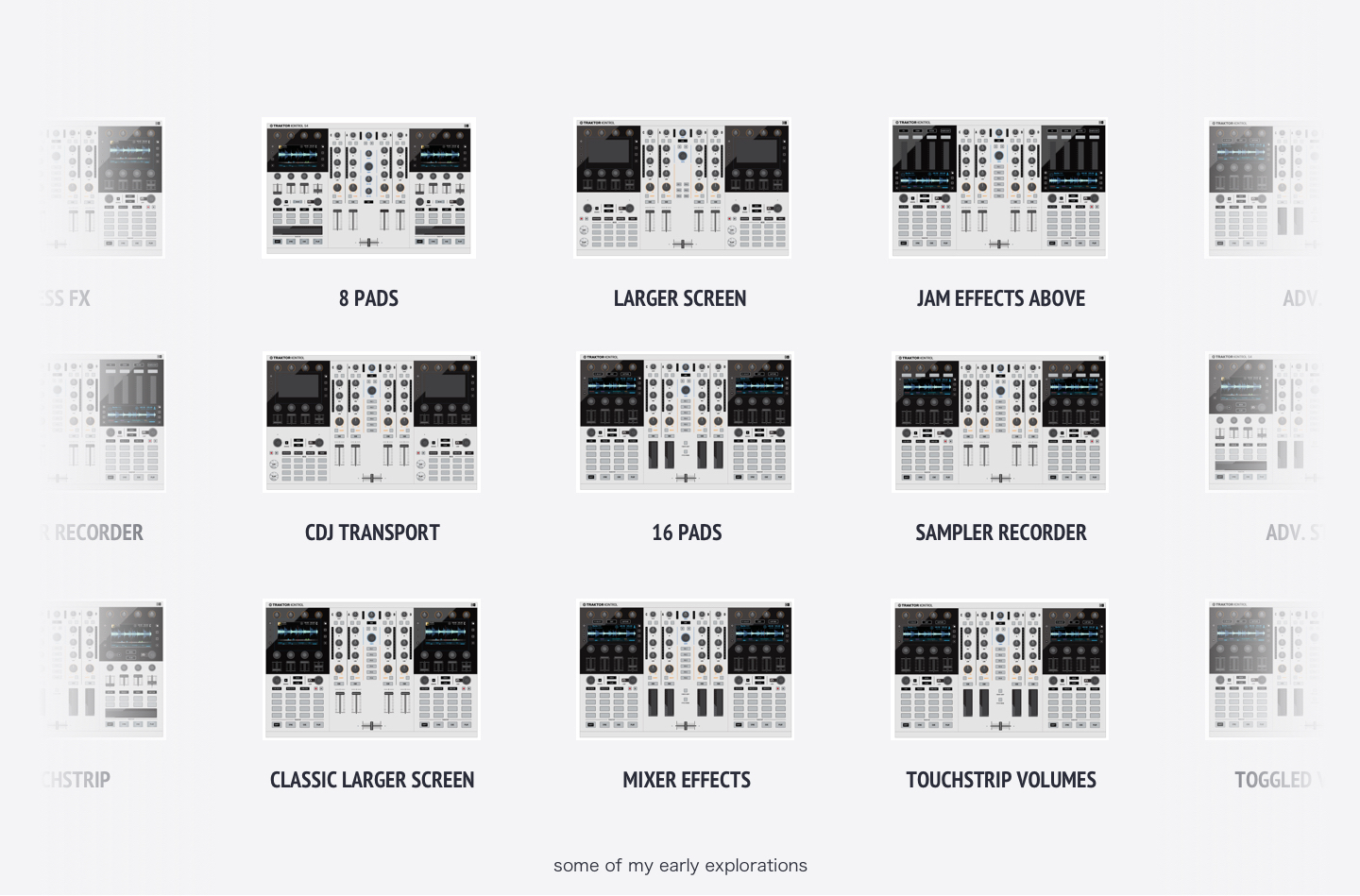
After running the first user tests the data allowed me to make a point for redefining the challenge scope based also on user needs. Here are some of the learnings from the initial test.
Manual beat-matching is essential for DJ-ing and sometimes a life-saver
Jog wheels are used for more functions than just beat-matching
Manual beatmatching needs a jogwheel and a pitch fader as a unit
Touch-strips do not have proper tactile feedback and are INACCURATE
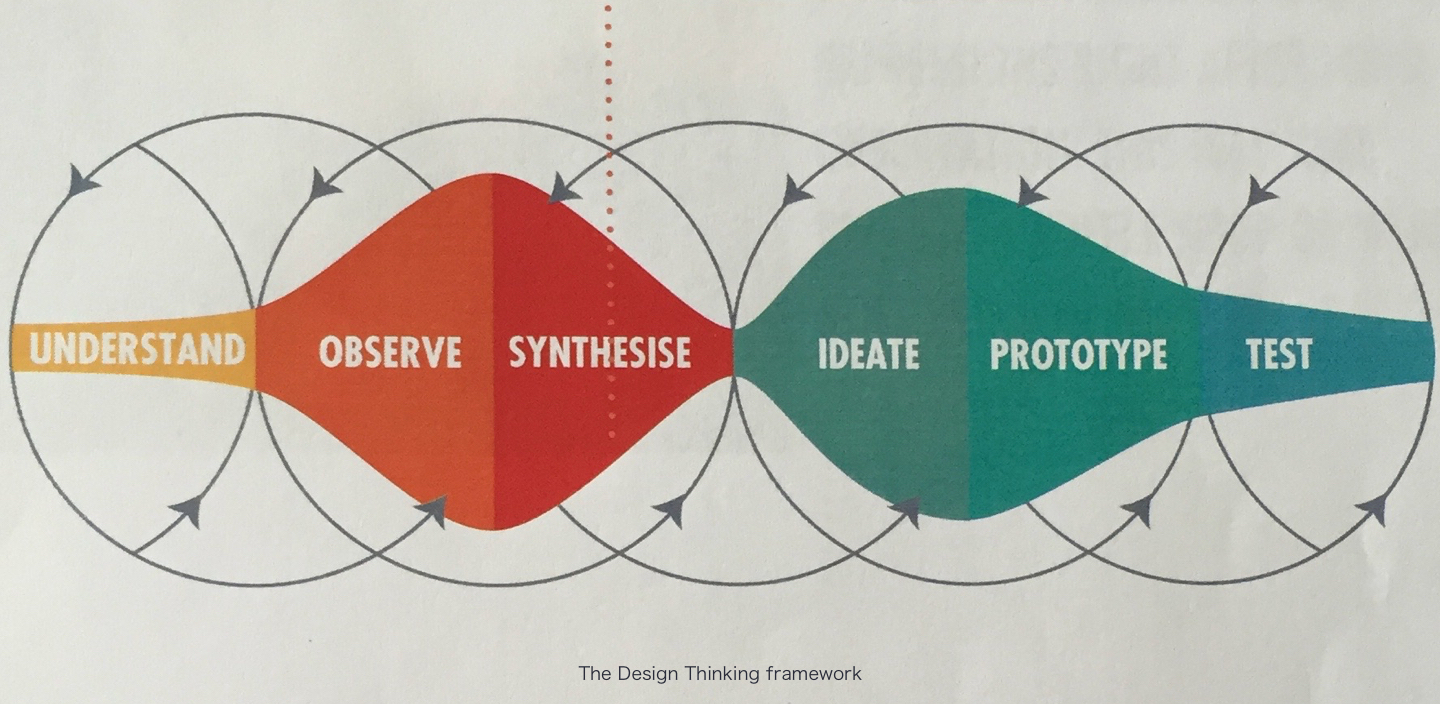
The clear user feedback made it possible to redefine the challenge. We started anew with a clean slate that could be defined by our users. Together with the product owner we managed to convince our internal stakeholders about the importance of having a “user first” approach.
I convinced the stakeholders to include this project in the new incubation effort that the company just started. It was also an ideal candidate for using the Design Thinking framework. We ran 3 complete cycles in 2 months.
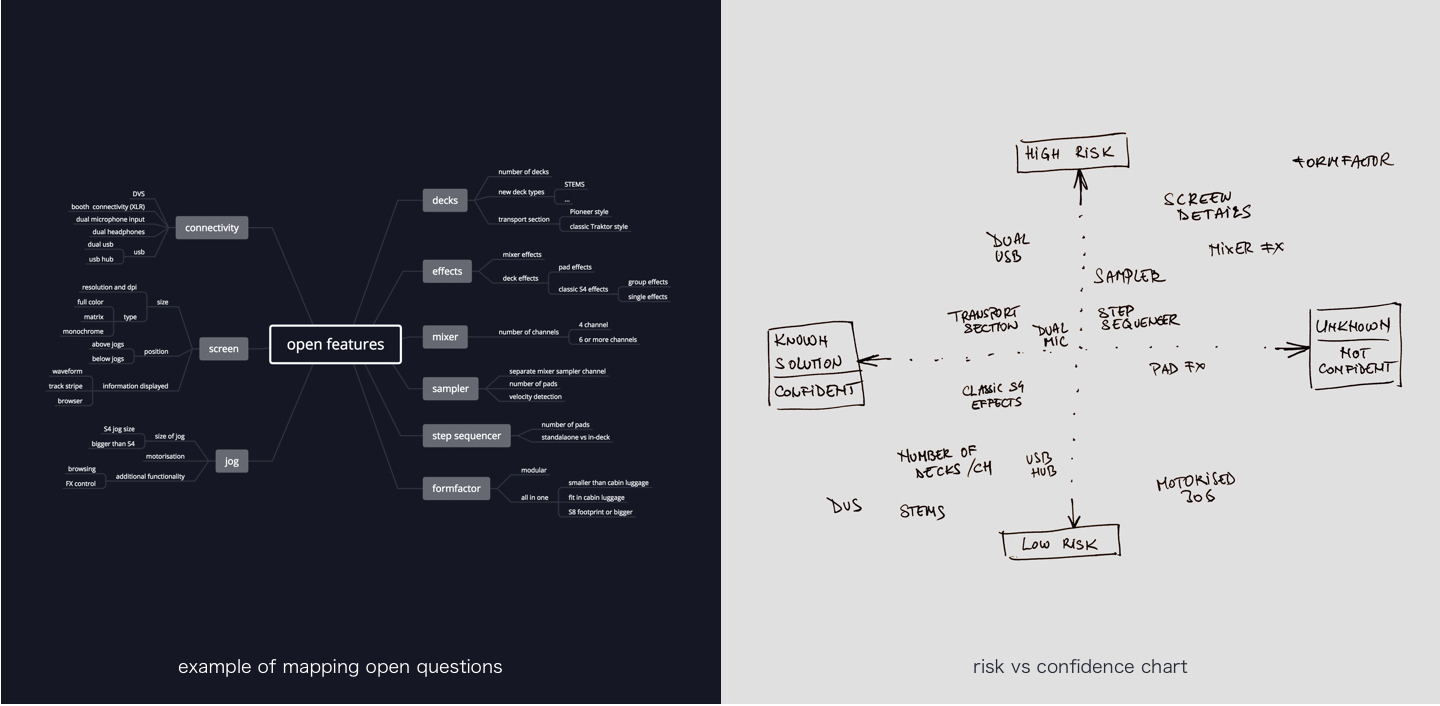
Following the user interviews, we identified three main user groups/personas. Ir became clear that the first user group was the most numerous and demanding. If we manage to satisfy them, the product would be a success.
Uses his system controller only at home. He does not have any club gigs, but he is maybe doing small parties with his buddies.
Uses a system controller on stage only if he has to provide his own gear. He would rather prefer to take a USB stick instead.
Actually prefers to use a system controller when he goes to a gig. It gives him confort as this is the same hardware he uses at home to prepare.
I worked on finding out what would the users see as optional for this device.
Card sorting was the most efficient way to group the “must carry” features and also a good opportunity for gathering insights along the way.
For the remote interviews I resorted to Trello.
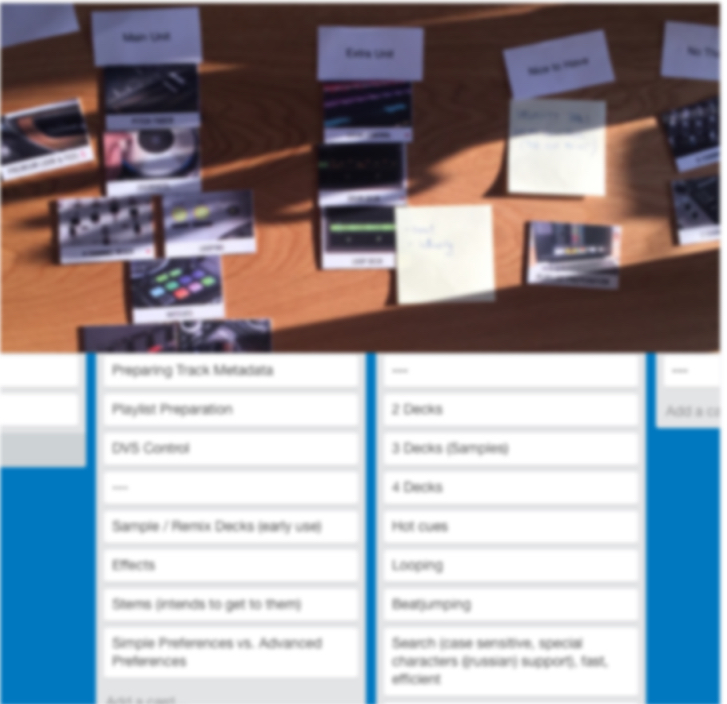
I got hands-on and I build a number of cardboard prototypes to mimic the real size and shape. To make it more realistic I worked together with our CAD engineer and 3D printed the jog wheels. The knobs and faders were simply glued to the surface.
This was the lowest effort needed in order to find the answer to our question about the device size.
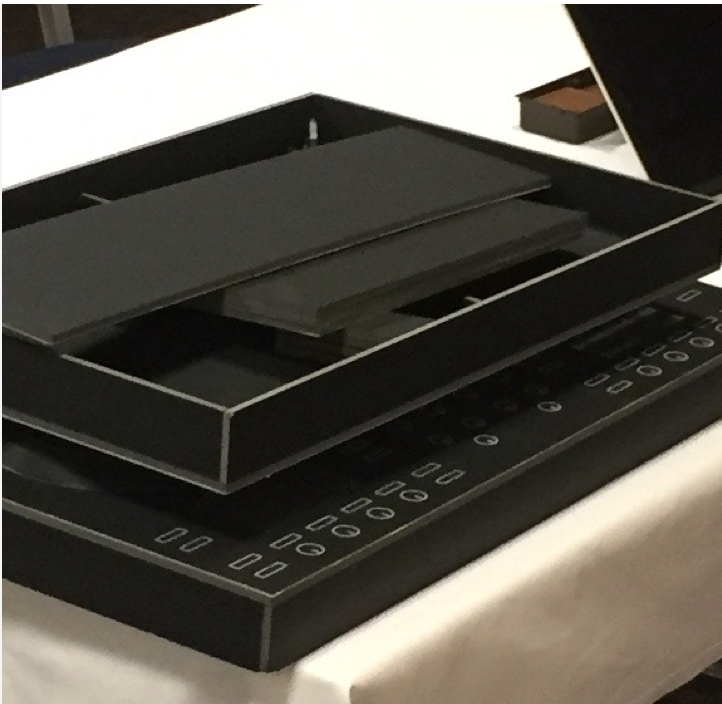
I did a co-creation exercise using a puzzle game approach. The scope was to find out what is the most natural way to display informations and where is this information expected. For this I experimented with different layouts.
The results were quite a surprise for me and my team. I was expecting that users would simply go for the big screen. This wasn’t the case. It turned out that people would rather offload some of the information to the laptop in order to have a smaller hardware device.
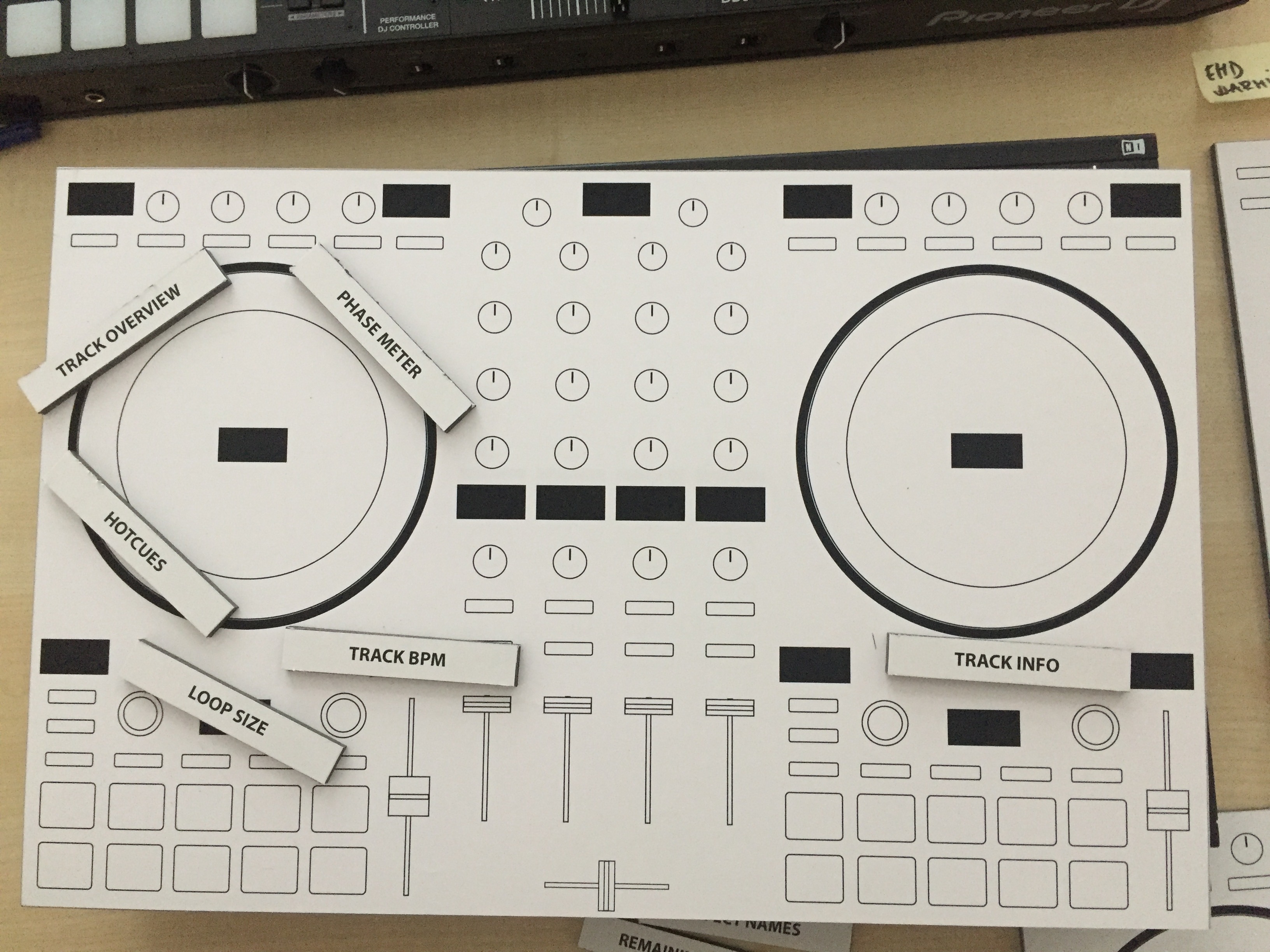
User interviews can generate a lot of data. It is important to extract the most important insights. Everything was shared with the team in synthesising sessions.
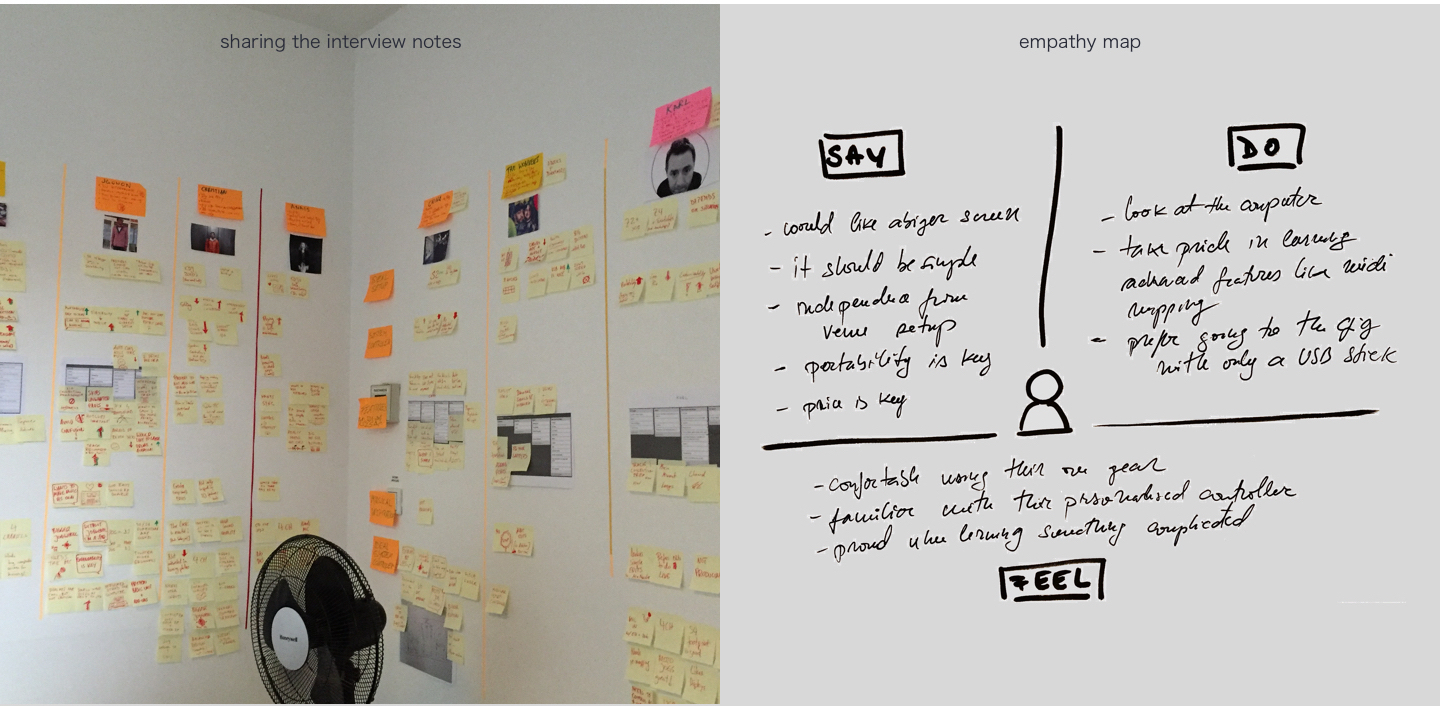
Taking into account our finding regarding the way users expect information to be displayed we decided to build a proof of concept. I paired with our r&d developer for this and defined the visual feedback patterns that could be displayed on a LED ring around the jog wheel. I used it for further user testing. This helped a lot in defining the final look and feel of the product.
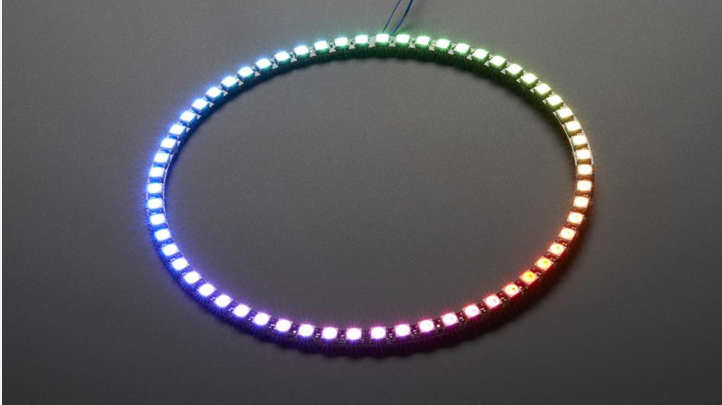
After the project was out of the incubation/exploration phase, in April 2016, the exploration team started the actual development process. A development team was formed the process went from a Design Thinking to a Lean UX model that was more suited for product development.
I worked on the design of the effect units, haptic jog wheel interactions, sampler functionality and helped with BOM estimation.
in order to further refine our product we use a Lean UX process that has cyclical phases.
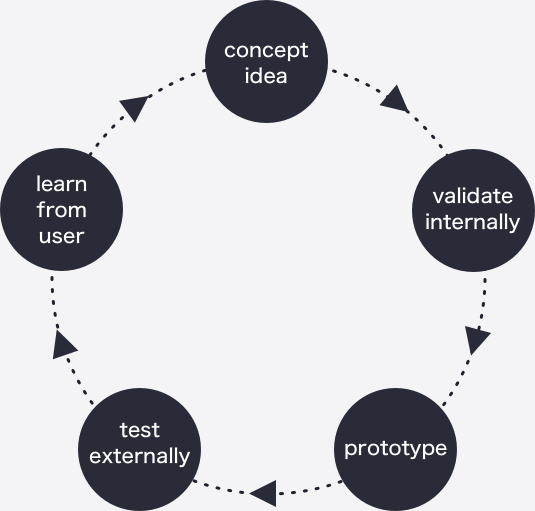
In order to better visualize our product very early on in the process I also realized some 3D renderings.
